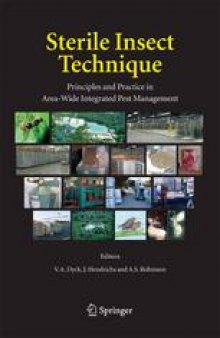 جزییات کتاب
جزییات کتاب
The sterile insect technique (SIT) is an environment-friendly method of pest control that integrates well into area-wide integrated pest management (AW-IPM) programmes. A first of its kind, this book takes a generic, comprehensive, and global approach in describing the principles and practice of the SIT. The strengths and weaknesses, and successes and failures, of the SIT are evaluated openly and fairly from a scientific perspective. The SIT is applicable to some major pests of plant, animal and human health importance, and criteria are provided to guide in the selection of pests appropriate for the SIT.A great variety of subjects are covered, from the history of the SIT to improved prospects for its future application. The major chapters discuss the principles, technical components, and application of sterile insects. The four main strategic options in using the SIT — suppression, containment, prevention, and eradication — with examples of each option, are described in detail. Other chapters deal with supportive technologies, economic, environmental, and management considerations, and the socio-economic impact of AW-IPM programmes that integrate the SIT. This book provides a wealth of information and reference material never before available in one volume. It will be a standard reference on the subject for many years. The authors, from 19 countries, are highly experienced in the subject, and reflect the international character of SIT activities. Since no university offers courses on the SIT, the book’s audience will be mainly students in general animal and plant health courses, but the in-depth reviews of all aspects of the SIT and its integration into AW-IPM programmes will be of great value to researchers, teachers, animal and plant health practitioners, and policy makers.
 درباره نویسنده
درباره نویسنده
در دوران ساسانیان مردمان به چهار طبقه اجتماعی تقسیم میشدند که مردم طبقه پایین این هرم قادر به بالا بردن طبقه خود نبودند و برای همیشه خود و نوادگان و پیشینیان آنها در همان طبقه باقی میماندند:



 دانلود کتاب
دانلود کتاب

 جزییات کتاب
جزییات کتاب
 درباره نویسنده
درباره نویسنده





 این کتاب رو مطالعه کردید؟ نظر شما چیست؟
این کتاب رو مطالعه کردید؟ نظر شما چیست؟
